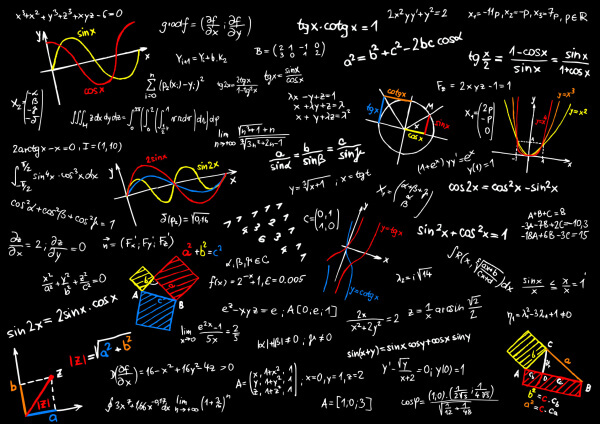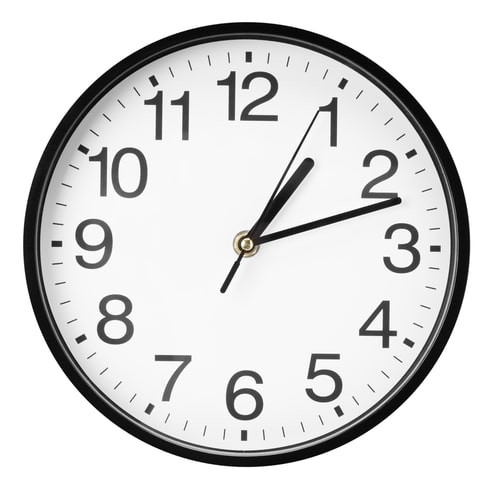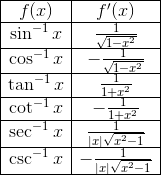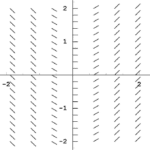The AP Calculus no calculator subsections thoroughly test your concept knowledge and reasoning ability. The questions are not especially difficult or tricky if you know the content. On the other hand, it’s good to keep a few tips in mind when approaching those AP Calculus no calculator problems.
1. Know Your Stuff
First and foremost, you must know calculus in order to do well on the AP Calculus AB or BC exam. It should go without saying, but if you do not understand the concepts and have relied on features of your calculator to do well on previous calculus tests, then you may be at a loss on the AP exam.

What’s on the Exam?
Be sure to review all of the topics on the exam. Depending on whether you take the AB or the BC test, there are three or four broad areas to study.
- Limits, Continuity, and Understanding Graphs
- Derivatives and Rates of Change
- Integrals, Area, and other Applications
- Sequences and Series (BC only)
For more detailed topic lists, check out What Topics are on the AP Calculus AB Exam? and What Topics are on the AP Calculus BC Exam?
2. Write Down your Steps
We all like to save time and effort. If I can work out the tip on my dinner bill without writing down the numbers, then it’s a win-win. However, the AP Calculus problems are much more complicated than computing a 15% tip.
I recommend jotting down at least a step or two for each problem, even if can do most of the work in your head. Too often I’ve seen students with amazing mental math capabilities bomb the test because of arithmetic mistakes or simply because they went too fast and didn’t think about all aspects of the problem.
This advice is especially appropriate for the AP Calculus no calculator sections. Sometimes you might have to add, subtract, multiply, or divide numbers as part of the process. It would be incredibly frustrating to have missed a problem just because of an addition error when you knew calculus concept inside and out.
Moreover, you are required to show all of your work for each problem in Section II of the exam. So you might as well get in the habit of putting your mathematical thoughts on paper.

3. Practice, Practice, Practice
Practice makes perfect. This applies equally well to both the calculator and no calculator sections.
There’s no better way to prepare for the AP exam than to do practice AP exams. Note the plural here. The most effective plan is to complete a practice AP exam every week for at least a month leading up to the exam date. Make sure to get a good study guide with at least 4 practice tests included.
Of course no one wants to give up 3 hours and 15 minutes of their life to do one practice test, let alone 4, 5, or more practice tests! But if you play sports, you know that the more time spent in practice, the better your game day performance will be.
For example, you might spend an hour and a half every day after school at soccer practice, even though the game on Saturday only takes 90 minutes. That’s five times the amount of time spent in practice as compared to the game. The same practice ratio makes sense for the AP test as well.
4. Budget Your Time
Pace yourself on the exam. The no calculator part of Section I of the AP Calculus test consists of 30 problems in 60 minutes. That gives you exactly 2 minutes per problem. If you find yourself spending 3 or 4 minutes on a problem, then it’s probably time to move on.

With no calculator to speed computations, you might discover that you’re spending far too much time on a given problem doing tedious calculations. In that case, I’d recommend skipping that question. Remember, you can always come back to a problem in the same subsection later if there’s still time.
Choose your Methods Wisely
On a related note, the test makers will never give you a problem that requires such extensive computation that it cannot be completed by hand within a few minutes. Therefore, if your method seems to require dividing two 8 digit numbers, perhaps you missed an easier method for working out the problem. Go back to square one and think about the concept rather than the computation.
5. Use Process of Elimination
This technique applies only to the multiple choice problems. Below each question is a list of four answer choices. Fortunately, “None of the Above” is never a choice on the AP Calculus exam. Hence, one of the four choices must be the correct answer. You can use this fact to your advantage if you have no other methods for attacking a problem.
- First of all, there may be one choice that is a bit different than the others. Sometimes that oddball answer has been thrown in to catch certain common errors and can be eliminated right away. But be careful; this is not a foolproof technique.
- Secondly, you may be able to eliminate choices based on partial work. Let’s say that you are doing an integral, and there is more than one term in the integrand. As soon as you know the antiderivative of the first term, check out the answer choices. Can any be eliminated based just on the first term?
- Thirdly, after you have eliminated one or two choices, don’t be afraid to guess if you have no idea how to solve the problem otherwise. By eliminating a choice or two, you’ve improved your odds of selecting the correct answer. There are no penalties for guessing on the AP Calculus exams.
AP Calculus No Calculator Section Summary
Aside from general test-taking strategies, like underlining key phrases and context clues in the problems, double-checking your answers, and staying calm and relaxed during the test, we have discussed five key areas that will improve your performance on the AP Calculus no calculator sections.
- Know Your Stuff.
- Write Down your Steps.
- Practice, Practice, Practice.
- Budget Your Time.
- Use Process of Elimination.
Hopefully these tips will help you to achieve the score you are aiming for!





Leave a Reply